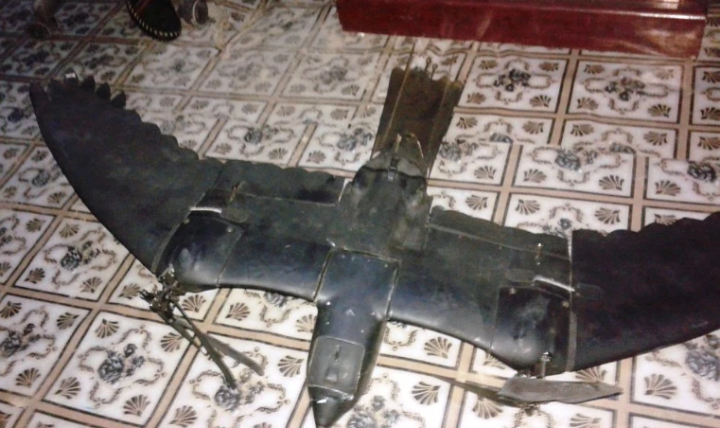
The black-colored bird drone was found by residents and posted on social media where the photo was shared all around the world. With its broad, sweeping wings and long tail feathers, the drone’s body was designed to mimic a hawk so as to conceal that it was a UAV.
The only drone parts visible were the two front propellers used to power the device. When flying at cruising height, only avid bird watchers would be able to tell the difference between the bird and a drone.
The UAV reportedly carried no payload and was likely used for some form of surveillance. Based on its relatively simple design, the operator probably launched the UAV from a local position and likely was nearby when the drone crashed and burned in a public area. Nobody has publicly claimed ownership of the drone and only a few details on the device are available. It is not know how or why the UAV crashed.
This incident isn’t the first time a bird-like drone has been spotted falling from the sky. In 2011, a similar unusual bird-like drone was recovered in Pakistan. The Pakistan drone was silver in color and on the smaller side. Its wingspan was about as long as a man’s outstretched arms and it was light enough to be easily handled by a single individual.
Similar to the recently recovered Somalia drone, the Pakistani bird drone was thought to be a surveillance drone, and it contained a camera that was recovered following the crash.
The USA military and other armed forces around the world are known to have bat-like drones for use in conjunction with surveillance vehicles. As part of its Fast Lightweight Autonomy project, DARPA is working on developing bird-like robotic drones that can fly autonomously and provide critical information about potentially dangerous situations.
The latest quadcopters being tested by DARPA can travel at speeds up to 20 meters per second without help from an operator or GPS guidance.



